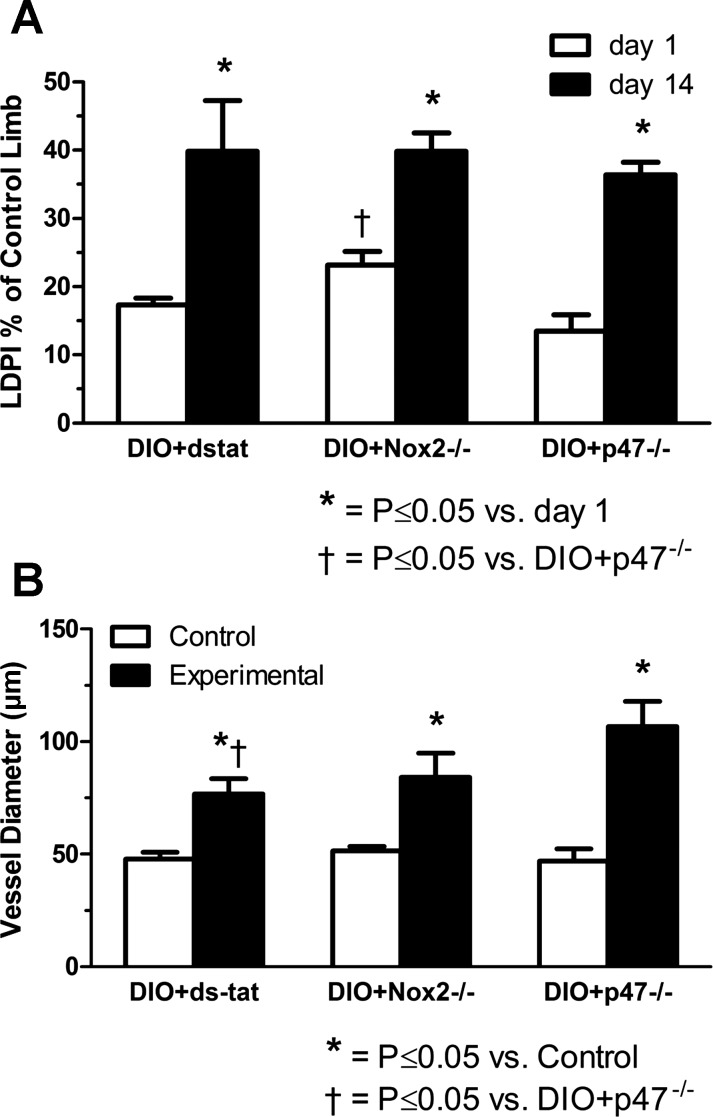Fig. 4.
Assessment of Nox inhibition on hindlimb reperfusion and collateral vessel enlargement after femoral artery ligation in DIO mice. A: specific pharmacological inhibition of the Nox2-p47phox interaction (via Nox2ds-tat; DIO + dstat) and whole body ablation of either Nox2 or p47phox subunits (DIO + Nox2−/− and DIO + p47−/−, respectively) attenuated the impairment in foot perfusion seen in obese mice (refer to Fig. 2A), as evidenced by a significant increase in their ligated limb perfusion from days 1 to 14 after occlusion (n = 3–8; note that LDPI imaging was not available for most of the DIO + dstat mice). B: treatment of obese mice with Nox2ds-tat or ablation of Nox2 or p47phox also attenuated the impairment in collateral growth observed in high-fat diet-fed mice (refer to Fig. 2B), as evidenced by a significant increase in collateral vessel diameter versus same animal controls for each of these treatment groups (n = 7–11).

